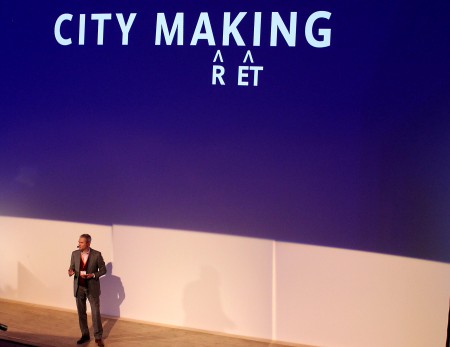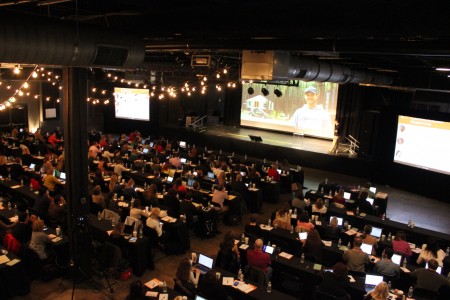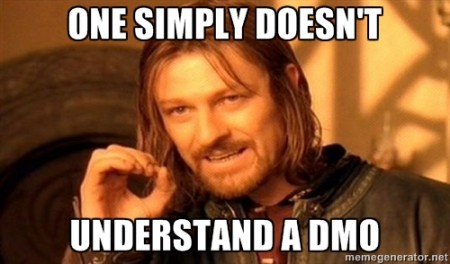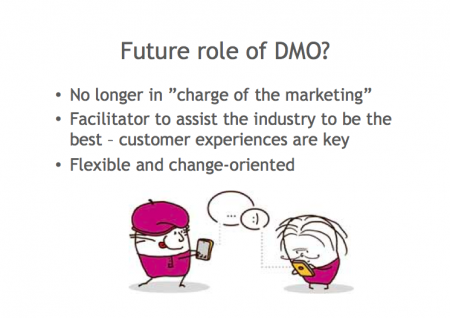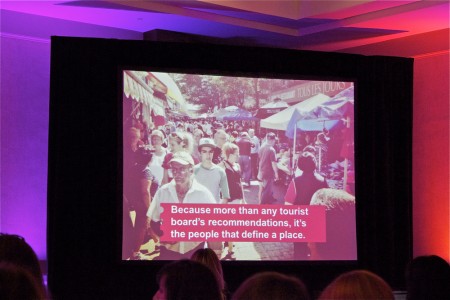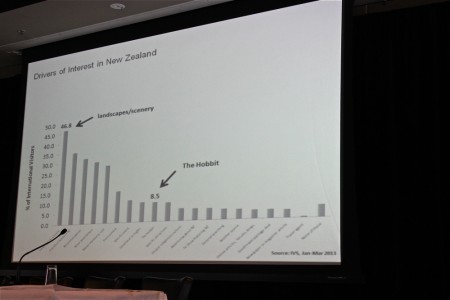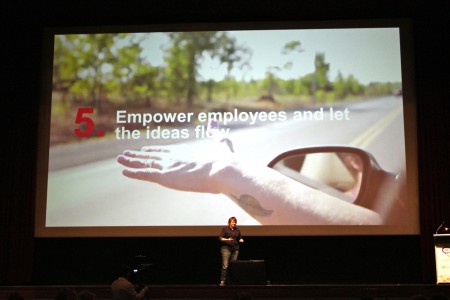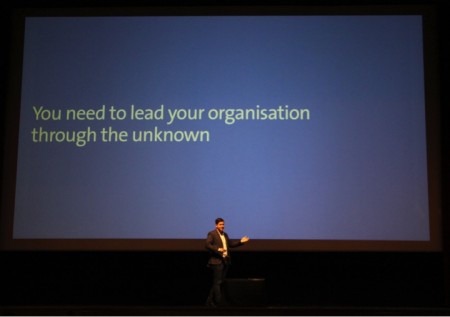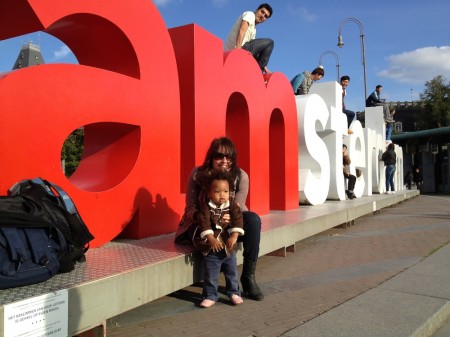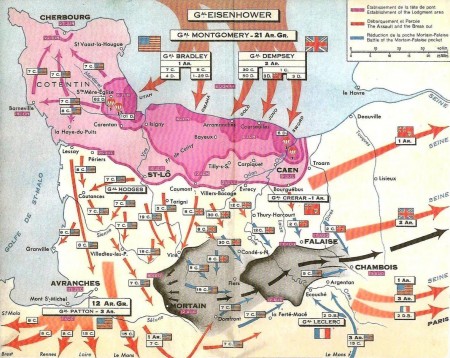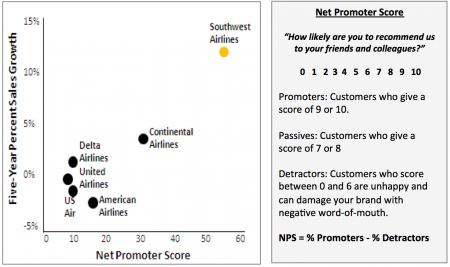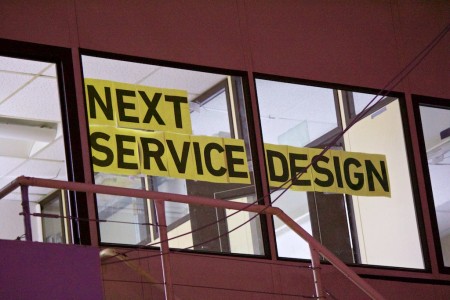Category
Management
-
leadership, Management, Travel & Tourism
Things every new DMO CEO needs to know
I’ve seen
1) Don’t dismiss the impact stakeholders
CEOs without DMO experience often dismiss the impact of stakeholders. Strong leaders are used to making decisions independently and push things along internally. These are good and necessary qualities in a leader.
But before you start making decisions and push things along, take the time to understand the stakeholder landscape. You need to consider tourism businesses, consider politicians or administrators, upward and downward DMOs. Understand the players, their agendas and influence. Most are supportive, some have an agenda and there’s always baggage. Like it or not, about half to 90% of your job will be managing external politics so you better know what you’re in for.
One of the first things a new CEO should do it map out the stakeholder landscape. This doesn’t have to take long by the way. Your staff already knows. Conduct a stakeholder mapping exercise to document what you’re dealing with. Do this in your first week. It should take a day and there are methods to streamline this process.
It might seem like a waste of time or a distraction. But believe me you cannot ignore this. You will get burned. A tourism board is a visible entity and directly or indirectly, most DMOs manage public funds. Without your industry and political stakeholders on your side, it’s going to be a tough road ahead.
2) Review existing strategies before adding your own ideas
New CEOs bring their own ideas. That’s logical. You want to make a mark, show people that under your leadership, things will be better than before. During the interview process with the board probably shared where the challenges are and you shared some of your ideas already. Let’s get it done right?
I’ve seen many DMOs move to implement great strategies, only to see years of work blow up because a new leader didn’t take the time to understand the strategy and moved to implement their own based on their assumptions going in. They often realize later they were wrong.
Blowing a fresh wind through an organization is often a good thing, and sometimes very necessary. But before you start opening windows to let the breeze in, offer your management team the opportunity to present the current strategies and processes. Go into these meetings open minded, curious and without assumptions. Give each VP a week to put a presentation of their strategy and processes together. Ask why a lot in these meetings.
Now we’re at the end of week two and you have a pretty decent understanding of current state.
3) Build consultation into everything you do
Hopefully you’ve done #1 and #2. There are probably opportunities to make things better. There always are. When making these changes, strategically and tactical, the most overlooked and ignored aspect of destination marketing is stakeholder consultation. Because it can be time consuming, frustrating and lead to bad decisions or mediocre programs and campaigns. Yes, all true. But not when you do it right.
Here’s the little secret I’ve known for about a decade. Having people involved in the process is more than half the battle. Give people a voice and listen. You might be surprised what you’ll learn and you’ll build allies who will be there when you need them.
4) Create a culture of innovation
Taking the the first two first two pieces of advice to heart can easily create another big risk a DMO leader faces. Management by consensus, risk aversion and inertia.
That’s where real leadership part comes in. Leadership for a DMO CEO means understanding the full scope of your destination and stakeholders, take it all in and develop a shared vision for the destination and rally people behind that vision.
5) Think twice before going retail
6) Stand behind your staff
THE CHALLENGE: A DMO has an incredible lineup of stakeholders. Most are supportive, some have an agenda and there’s always baggage. You need to consider tourism businesses. You need to consider politicians and administrators. You need to consider DMO’s who manage a destination within yours, or manage a destination yours is part of. You cannot underestimate this. You cannot ignore this. A tourism board is a visible entity. It’s part of your destination’s identify. And directly or indirectly, most DMOs manage public funds. That means the press is always ready to find a juicy controversy.
The mistake DMO leaders often make it to play it safe. This manifests itself
THE SOLUTION: Your stakeholders need to buy into your strategies. That means you need to have an inclusive and collaborative approach. But it’s a fine balance. Too little and there’s no buy-in, too much and things get bogged down. Sometimes you need to push, sometimes you need to take the foot off the gas. Strong leadership is crucial.
As a leader, our #1 priority should be your staff. Make sure they have the right skills and motivation. Create a culture of trust and learning from mistakes.
4)
Often
4)
-
Management, Marketing, Travel & Tourism
Messages from #SoMeT14EU you can’t ignore
Know what you’re not
Sveinn Birkir Björnsson – Promote Iceland
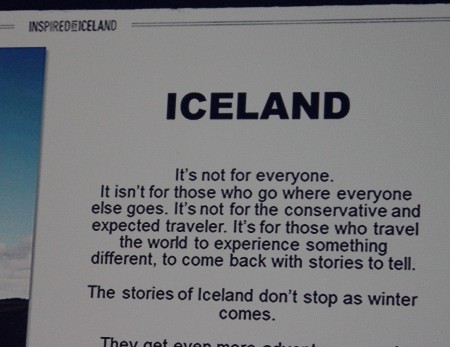
Sveinn demonstrated how a DMO can make a big impact on a smaller budget. It starts by understanding what you’re not and not being afraid to take a stand. How many DMOs claim to be “diverse”? How many DMOs claim to have “something for everybody”? Island doesn’t. And Island is not afraid to say so. As a result, the people that visit are much more likely to love the place. And when people that will probably love you visit, the stories they share in social media will be much stronger, building the right brand amongst their circles.
Manage your destination experience
Peter Kentie – Eindhoven 365You can leave it up to the Dutch to present the transition from destination marketing to destination management in a visually stimulating way. In Eindhoven, Peter isn’t city marketing, he’s city making. They are practicing the future role of the DMO. Very little promotion but instead play an active role in managing the destination experience.
Eindhoven also know what they are and what they’re not. They have defined their niches as technology, design and knowledge. Positioning the city in these niche groups and “turning up the volume” to engage visitors and generate the right stories. Even citywide Wifi has been thought off.
Develop a brand your residents connect with
Peter Kentie – Eindhoven 365Making your residents an active part of your promotional efforts is critical for a DMO. That’s why we recommend our clients to choose a destination hashtag that speaks to local pride for example. Eindhoven took it one step further by crowd sourcing their visual identity and pretty much open source it so others can use it for their purposes. The result is an identity people that’s used across the city connecting with people so strongly that some now carry tattoos with the logo. Have anyone in your destination a tattoo with you logo?
-
leadership, Management, Marketing, Travel & Tourism
The business case of attending a #SoMeT conference overseas
I have the privilege of attending our SoMeT conferences on three different continents. The learning is incredible. Both from the speaker content, and also from speaking to the attendees. It helps me a lot in my work.
A question I get asked a lot is if there are differences between DMOs in different parts of the world, their challenges and their approaches to solving them. The answer is: yes and no. The challenges are very similar but the approaches differ. I think the regional differences are partly cultural but also influenced by the “neighbour effect.” People pay close attention to the DMO next door, and then this is reflected in their own strategies and tactics.
For this reason, it’s interesting to attend a SoMeT conference on a different continent. You’ll see a different spotlight shone on familiar challenges. It can be very eye opening, and will inspire you to try new ideas and approaches. I know it does for me. Not to mention the fact you’ll also make new connections with your international peers.
It might be a tough sell to your boss or board. The optics and psychological barrier of an intercontinental flight (and costs) to go to a conference when there are options closer by is challenging. But when you put it in terms of value, the additional cost are minimal compared to the value it delivers. We’re talking a few hundred dollars.
So keep an eye on our conferences around the world and what they have to offer. #SoMeT15EU will be held in Amsterdam.
-
Management, Marketing, Travel & Tourism
Six things tourism businesses should know about their DMO
08.11.14 | Permalink | 35 CommentsI’ve worked at a destination marketing organization for 11 years, and have spent the last 4 years at Think! where I’ve worked with more than 100 DMOs from all around the world. And a big challenge for every DMO is managing their industry stakeholders. The politics. Proving value and relevancy.
Even if well-intended, I don’t think industry stakeholders truly understand how their actions can impact the efficiency and effectiveness of their DMO.
If you’re a tourism business, this is what you should know about DMOs:
1) A rising tide lifts all boats
You might compete with other businesses in your destination, but the reality is that when more people want to visit your destination, everybody benefits. That’s the marketing job of the DMO. To get more people there, get them to stay longer and spend more money. Your DMO needs to focus on the things that make your destination unique and the things that make people want to visit. You might not like it, but some experiences/businesses are more important drivers for tourism than others.
Don’t take the view that that big attraction doesn’t need additional exposure, because you’re completely missing the point. The Eiffel Tower makes people want to visit Paris, while the café down the street probably doesn’t. Tourism Paris needs to promote the Eiffel Tower, not the cafe, lovely as it might be.
What you should do: let the DMO work by focussing on the things that will make business better for everybody, even if that means giving more exposure to certain products than others.
(And while we’re on the subject: if your hotel/restaurant/tour etc is booked out when a visitor enquires, why not recommend a trusted partner business? You’re not losing business to a competitor, you’re gaining a visitor to your destination and working together to raise all boats.)
2) A DMO isn’t responsible for your sales
With the exception of few cases, your DMO shouldn’t put their time and effort into selling things. It’s a waste of resources. Once someone makes the decision to visit, there are legions of other places where people can buy packages, flights, hotel rooms, etc. These organizations are much better at it than your DMO. Your DMO doesn’t need to do this.
What you should do: Don’t see your DMO as a sales channel. Your DMO sells the destination experience, not tickets or reservations.
(Note: some city DMOs have very successful booking systems, ticket services and city card programs, but these are the exceptions.)
3) DMOs need to take a long-term view
As a tourism business, you worry about next month’s sales. And if they don’t look good, you might look at your DMO to try and fix it. In some cases, that’s valid (think the BP oil spill). But in most cases, it’s not. Your DMO should take a long-term view (especially your state/provincial/national DMO) to build your brand, reputation and demand for the long term. If they don’t, other destinations will win in the long run.
What you should do: Let your DMO take a long-term view for the ongoing growth of tourism in your destination.
4) People working at the DMOs are passionate about you and your business
DMOs are often publicly funded. That comes with specific complications. They’re under a lot of political and press scrutiny. If they make a “mistake”, it can be used by politicians in the opposition, or result in negative press. Both can have very bad impacts on funding.
This situation can make things frustrating for you. But guess what, your DMO people are often very frustrated by bureaucracy…they just won’t tell you that. I’ve worked at, spoken to and worked with hundreds of people working for these organizations and they’re almost always the most dedicated professionals who understand their responsibilities. They love where they live, what they do and want to make you successful.
What you should do: Lose the scepticism, and learn to collaborate and support the staff of your DMO. They’re good people who need your support, especially when they’re impacted by politics and press.
5) Stop evaluating marketing based on how it looks
It’s very easy to have an opinion about marketing based on what it looks like. “I like this ad/I don’t like that one/I like the colour of this website/I don’t like that one.” Often this involves the competition. “Those TV ads from Destination X look much better than ours”. Or worse: “Why don’t we advertise on TV, the way the DMO next door does?”
Because industry stakeholders pay so much attention to how things look, a DMO will often pay more attention to what their industry might think instead of what is most effective for the potential visitor. They’ll even ignore marketing such as Google Ads, email marketing or social media because they need the budget for TV or something. It’s often not because they want to, it’s because you make them, directly or indirectly.
What you should so: Don’t judge your DMO’s marketing based on how it looks. Focus on objectives and results. Be open minded about where and how they market your destination. The world of marketing has changed.
6) Embrace failures
That doesn’t make sense, right? Actually it does. In order to learn, you need to win… but you also need to lose. Michael Jordan missed a lot of shots and once said “I’ve failed over and over and over again in my life. And that is why I succeed.”
As a marketer you need to experiment in order find out what works and what doesn’t. There are too many DMOs out there afraid to do anything different or innovative because they’re afraid. Afraid that if it doesn’t work out, industry stakeholders, media or politicians will criticize the efforts, and their funding (or jobs) could be in jeopardy. As a result, DMOs are often very risk-averse, resort to being safe and old-fashioned, with mediocrity as a result.
What you should do: accept failures as long as they’re used to make things better in the future. Also, defend your DMO from media and politicians when things don’t work as planned.
Any other suggestions, or examples where your businesses have supported your DMO? Share them with me here!
-
leadership, Management, Marketing, Travel & Tourism
The state of the DMO in 2013
(this post was first published on Tnooz)
I attended over a dozen tourism conferences this year on four continents, including our own #SoMeT conferences. Looking back at the pictures I took and the presentations I’ve downloaded, there’s a common thread and it tells a compelling story about the future of the DMO.
Change is needed
William Price – South African Tourism (#SoMeT13AU)At #SoMeT13AU in Australia, William didn’t mind shaking things up with some provocative quotes including this one. We need to stop doing stuff that doesn’t work and start doing things that do work, and South African Tourism is blazing trails.
What I’ve realized this past year is that we’ve passed the phase where people are skeptical or in denial. We have entered the phase where we are starting to ‘sort out‘ the model, as Clay Shirky calls it. The only things standing in the way are fear, lack of the correct skills and/or not knowing where to start.
The winners aren’t the ones with the biggest budget
Jacques Massardo – Ogilvy Cape Town (#ETAS13)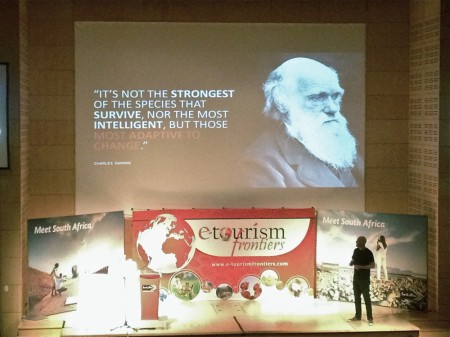
(Please someone correct me if I got the presenter of this slide wrong. I took it at E-tourism Frontiers in Cape Town and forgot who it belongs to.)
I really like this quote because it’s very relevant to what’s going on right now. I see it all around me. The DMOs with the biggest budgets aren’t necessarily the ones who are going to win. They can hide the fact they’re falling behind through big media buys, but there will be a tipping point soon where those who didn’t adapt will have to deal with massive change in a short period of time. And that’s going to hurt. Those who have transitioned and adapted strategically over a period of time will reap the rewards.
By the way, the tipping point is when boards and/or politicians move away from judging activities based on how things look or make them feel, and instead look at the numbers that matter. I’ve started to see early indicators of this already.
The winners are the ones that think outside the box
Heidi Sørvig – Visit Sørlandet (#ENTER2013)At #ENTER2013 in Innsbruck, Heidi Sørvig from Visit Sørlandet gave a very to the point presentation about how running a DMO in the 21st century really doesn’t have to be that complicated if you’re not afraid to lead, challenge the status quo and make changes.
I’ve been a fan of Heidi’s strategy. It’s very innovative and practical. Her primary KPI is repeat visitation. Because if people come back, it means they like the experience. It also means they will probably recommend the destination to others. She also understands that it’s more efficient to train industry operators about how to manage and market a tourism business than pouring that money into traditional advertising. She has created a program for operators that’s probably the most extensive and sophisticated of any I’ve seen. And all on a small budget.
The winners approach change strategically
Emmanuelle Legault – Tourisme Montréal (#SoMeT13AU)Tourisme Montréal (a Think! client) has been one of the most innovative DMOs in the ‘big city’ category for years. With leaders like Emmanuelle, TM is not afraid to challenge the status quo, take risks and experiment. I admire her courage because she wants to do what’s right. At #SoMeT13AU, Emmanuelle shared how they’ve been transitioning from a Destination Marketing Organization to a Destination Management Organization over the last few years and how they have dealt with some of the obstacles.
The winners understand to let go of control
Frédérick Ranger – Tourisme Montréal (#SoMeT13US)Accepting that a DMO doesn’t create a brand, but consumers do was one of the common threads at #SoMeT13US. This is a major shift for many marketers who are used to keeping a brand under tight control. At Tourisme Montréal, one of their guiding principles is to let go. Fred gave a passionate presentation in which he demonstrated how Tourisme Montréal is implementing programs and campaigns that deliver on this principle.
The winners understand the consumer
Donna Moritz – Social Media Strategist at Socially Sorted (#SoMeT13AU)Donna shared this wise quote from Apu Gupta. What it means is that the transaction will happen as a result of an emotional relationship, and one that grows over a long period of time. It sits at the essence of most modern marketing philosophies including social media, content marketing and permission marketing. In the tourism industry, however, we often seem to be chasing the next “head in bed” or “bum in seat”. Tactics are focussed on the short-term, but we need to take a long-term view to build reputation and loyalty over time.
The winners measure the right things
Andrew Pozniak – Kuoni (#ENTER2013)Kuoni is a very large luxury travel brand. In many ways they are very traditional, but I’ve seen a few presentations from them now and the way they go about things will set them up perfectly for the future…if they get their online strategy right.
Kuoni places a lot of value in NPS (Nett Promotor Score) and they measure this at different stages of the customer journey. I like this slide because it’s almost identical to one I use. NPS is the best quantitive measure for the overall destination experience. The science behind NPS shows a correlation between NPS score, loyalty, referral and corporate growth. It’s also easy to do.
The winners take charge of designing the destination experience
Marc Stickdorn – Think! HangoutMarc is one of the real thought leaders for service design. He co-authored a book called This is Service Design Thinking and now runs My Service Fellow and Smaply. I’ve known him for a few years and he was kind enough to do a presentation about service design for the Think! team over Google Hangout. Service Design is a methodology, process and a set of tools that will deliver on this objective, just like Information Architecture, Usability and Interaction Design for websites.
Now that we need to build a brand on the ground, through stories people tell, a DMO needs to design the end-to-end destination experience. By using the dollars typically spent on advertising to work on designing the complete destination experience, people will have a better destination experience. As a result, your NPS score, the stories people tell, repeat visitation and referrals will go up.
The winners build their brand through the experience on the ground
Gregg Sauter – Saskatchewan Roughriders (#HostSK2013)The Saskatchewan Roughriders (a Think! client) have a strong brand and very loyal following. Gregg explained at Host Saskatchewan that they way they’ve built their brand is primarily around experience. The result is incredible: 2/3rds of all merchandise sales in the Canadian Football League are for his team.
This slide maps some of the touch-points with their customers before the game even starts, from the parking attendant to the stadium host. Mapping the customer journey like this is part of the service design process. It’s the starting point to examine, benchmark and redesign critical touch points where required.
The winners constantly experiment, measure and adjust
Jori Kirk, Cypress Hills Eco-Adventures Ltd (#HostSK2013)Jori operates an adventure tourism business in Saskatchewan, Canada. I loved his presentation during which he described the keys to his success. As a small business owner, he keeps things simple and focused. He does this by cleverly using technology, offering value while embodying the right corporate values and engaging staff (mostly guides) to empower them and make the experience awesome for the customer. The result is a runaway success.
Jori understands the story his customers what to be part of, how to deliver it and and how to get the story told. If he misses the mark, he will adjust elements to fix the plot of the story.
The winners add real value to the consumer
Jay Baer – author of Youtility: Why Smart Marketing Is About Help not Hype (#SoMeT13US)Jay Baer‘s message is all about creating value for the consumer. You can’t compete for attention anymore and the best way to gain trust is by adding true value to people’s life. He wrote a good book about it.
It’s not hard to figure out how this applies to travel. Great customer service is key and visitor centres have traditionally facilitated a way for DMOs to deliver it. But customer service has moved outside of those four walls and a roof. Customer service now happens online, on Twitter, Facebook and message boards in all stages of the customer journey.
The winners will engage their network
Sarah “Sos” Mattsson – Tourism and Events Queensland (#SoMeT13AU)While presenting their online video content strategy for Tourism and Events Queensland at #SoMeT13AU, Sos explained how they have identified key groups of video content producers and described how they fit into their strategy.
It’s important to recognize who the main groups of storytellers are and creating strategies that will help get the best stories out there. It’s also a great way to scale customer service. For example, TripAdvisor destination experts are doing customer service work for free.
The winners market to niches that matter
Catherine Bates, General Manager Brand and International PR, Tourism New Zealand (#TEEC)Catherine presented Tourism New Zealand’s three-year strategy to leverage the Hobbit movies as a niche marketing opportunity. Even though it’s very traditional (and I wish I could make it social at the core), it’s a perfect example of marketing to a niche audience. For example, Catherine shared the fact that while only 1% of visitors to the city list the Hobbit as a primary reason for a visit, but it still represents $33M.
Focussing on a niche creates big opportunities because you can narrow your focus. Engaging a niche audience via their passions is much easier because it’s very relevant to them. And when you do it right, they will respond by sharing and influencing friends.
The winners empower staff
Kate Duffy – Canadian Tourism Commission (#SoMeT13AU)Kate described the Canadian Tourism Commission’s social media journey. When a consumer is social, a brand needs to be social as well, and that will ultimately lead to a social business.
A social business will be the end game – we call it a Level 5 DMO. Organizationally, it means letting of the control internally. The rate of change is only going to increase and as the role of the DMO changes and marketing becomes real-time, it’s really important to reduce bureaucracy and empower staff. It might sound scary but you’ll be surprised to what level people will rise to when they feel a sense of responsibility and empowerment.
The winners enable change from within
Jesse Desjardins – Tourism AustraliaAt #SoMeT13AU Jesse from Tourism Australia shared some of the strategies and approaches to managing the largest DMO Facebook page in the world. It’s very practical and another demonstration that it doesn’t have to be complicated. Just like Kate, Jessie also promoted the fact that it is the responsibility of the people within the organization to champion changes.
For DMO leaders, my advice is to listen to the teams that are running your digital and social platforms. There is an incredible amount of talent out there and you need to use it. I’ve seen good people walk away out of frustration and that hurts all of us. Support your staff and take some risks. Let them create a plan. Park your skepticism, and invest in the future. Learn. And share it with your industry so they understand your new role better. Start the journey so you can manage it over time.
For DMO staff, be an advocate. Find opportunities to create proof of concepts and promote them internally. Help your leaders and your industry understand what is the most efficient and effective way of destination management. Things won’t change by waiting for somebody up top to do the right thing, be pro-active and promote successes.
Conclusion
This year was an exciting year. Many DMOs have done incredible things and I’ve learned so much. I’ve seen many more great presentations I didn’t include here. The future of the DMO is bright, as long as we let go of sacred cows, let go of fear, create a plan to move forward, learn and adjust as we go.
Where to start? Benchmark your current activities, set clear objectives and create a strategy. At a minimum, create a plan for next year to start moving in the right direction.
-
Internet, leadership, Management, Marketing, Travel & Tourism
Building the social destination brand
09.16.13 | Permalink | 3 CommentsThe Iamsterdam sign is an invitation to take a picture and share it
Building a destination brand is done primarily through the stories people tell each other. And social media has only accelerated that process. Getting more of the right stories told is a massive opportunity but how do you go about it?
Here’s a 5 step strategy for this.
1) MOTIVATE
A destination is the stage where memories are made and stories are created. People ignore or forget the ordinary and remember and share what’s remarkable. These remarkable experiences often turn into the primary motivators for others to visit a place. In order to get more stories told in social media, you need to make sure things are worth talking about. The IAmsterdam sign in Amsterdam (above) is always surrounded by tourists taking photos. Not only is it a cool piece of art, it’s also the perfect way to tell your (Facebook/Instagram/etc) friends where you are.
For a tourism business it’s important to build in moments that motivate people to share in the overall experience. For a DMO it’s important to increase the number of things worth talking about overall. Educating your operators about this principle is the low hanging fruit. Every tourism business should have at least one reason for people to talk about them. Often it’s just a matter of making a few tweaks to get people talking. Getting involved in city planning might be more difficult but can pay-off with massive dividend.
2) ENABLE
When there’s something worth sharing, people need to be able to share it right away. For international visitors, data roaming is often an obstacle and the availability of free Wifi will increase social sharing. It’s not just the responsibility of operators. Viewpoints, beaches, mountaintops, buildings of great architecture typically don’t have a tourism operator associated and Wifi is nowhere to be found. This is where the DMO can step in. Taiwan gets it, they offer free nationwide Wifi to tourists.
But there are other obstacles. Some businesses don’t allow pictures to be taken while others don’t have the proper lighting to make photos or to make them look good. It’s a missed opportunity, you have to give people the opportunity to share, even if it’s in a limited capacity.
3) ENCOURAGE
People will share an experience when they find it remarkable. For people on the fence it’s easy to pull them over the line by encouraging them. This can be achieved by things from signage to incentives. Disney identifies places in their theme parks with photo opp signs. Some DMO’s are starting to do the same. We worked with a ski resort last year to do put signage up to encourage sharing combined with and a contest for the best photos shared.
At an operator level it’s often a matter of reminding and asking people. Remind people on checkout to give a review on Tripadvisor for example, or follow up with an email. Others take it a step further. When I was in Wollongong, Australia, the Skydiving operator filmed and photographed the experience and gave me a link where I could download the images with an easy way to share them through my social channels.
4) CURATE
When people share stories, it’s important to find them. Social Media is like a world-wide, real-time, always-on focus group. You’re crazy if you don’t take advantage of it. You need to find them the relevant stories about your destination, good or bad.
A lot of other opportunities and insights can be gained from the massive amount of stories out there. Brands like KLM, Gatorade, Nascar and many others have dedicated social media team that monitor social media for a variety of purposes. These programs separates signal from noise by curating the content and processing it for specific purposes. Some data might need to actioned on while other data serves specific research purposes.
5a) ACTION – AMPLIFY
Some of the best stories told in social media are worth incorporating in your own marketing. People share stories with great emotional appeal and the quality, creativity and authenticity often rivals what a DMO and their agencies produce. Use the best content you find to enhance your own activities of amplify them through your own channels.
Visit Britain started sourcing the majority of the photos on its website from Flickr back in 2009. Tourism Australia only posts photos on Facebook submitted to them by their community. Many DMOs find the best photos on Instagram and reshare them while Pinterest is probably the best example of content curation with the best photos people find online.
But why stop there? You might want to give some quality content even more exposure. You can use some SEM budget to amplify a great blog post from an influencer for example. Some amplification can go even further. The Canadian Tourism Commission turned some of the best YouTube videos they found about Canada into TV commercials and recently crowd-sourced another. It doesn’t matter who created the story or where it’s located. What matters is that it moves a person down the funnel.
5b) ACTION – CUSTOMER SERVICE
Social Media will identify customer service challenges and opportunities. DMOs are already in the customer service business but have often limited themselves to a box called a visitor centre. Step outside the box and start assisting visitors in real time by responding to people in social media. Customer service challenges can be resolved quickly before they turn into negative stories.
In the meantime, the overall visitor experience will benefit from assisting travellers through social media. KLM will respond to any social media question within an hour. Most tourism operators don’t have the luxury to set-up these kind of services but the DMO can fulfill that role on behalf of their industry.
5c) ACTION – MITIGATE
Listening can also help to find information about a destination on the internet that’s incorrect (yes, there is incorrect information on the interwebs). This information could be viewed by many potential visitors who could make the wrong decision as a result. Often it’s just a matter of contacting the owner of the source to correct the error. Start by asking nicely!
If something slips through the cracks and negative stories start to emerge it’s important to mitigate these as soon as possible. There are also specific events that could cause a social media crisis. Think about a natural disaster, a call for a boycott or an influencer will a horrible experience. Being prepared and having a social media response plan in place will streamline communication before things escalate far and wide and cause considerable damage. Don’t rely on old corporate communication strategies, they don’t apply to social media. Just ask United.
5d) ACTION – LEARN
People will take pictures of things they find remarkable. And when they put themselves in the photo it’s even more remarkable. The things people find remarkable might surprise you. Insights gained from a curation program can provide you with all kinds of new marketing ideas or even identify potential target audiences. You will also identify the challenges visitors might have with the destination experience overall, sometimes in places you might not expect. Addressing these challenges in a fundamental way through service design will allow you to create a more favourable perception of the destination overall. You can measure these things over time, segment them by audience, experience and other parameters. It’s a massive opportunity and part of the future of destination marketing.
-
leadership, Management
Strategy vs. Tactics
03.07.13 | Permalink | 3 Comments“Strategy without tactics is the slowest route to victory. Tactics without strategy is the noise before defeat.”
― Sun Tzu, The Art of WarOne major topic of discussion at Think! is whether a client who ask for strategy really wants a strategy or wants a list of tactics.
Here’s a guide to strategy and tactics.
STRATEGY VS. TACTICS
A strategy is a long term approach to achieve a big goal. It spans a longer period of time and describes an approach to achieve that goal. It’s often complex and muli-layered. A strategy allows you to set priorities and focus your resources. It should also define what success looks like.
Tactics are smaller, short term actions to deliver on the strategy. Tactics need to be evaluated and adjusted constantly based on what is learned along the way. But a strategy needs time and typically stays in place for a longer time unless the goal or other macro variables changes.
THE DANGER OF TACTICS WITHOUT STRATEGY
Some people are focussed on doing. Strategy to them looks nebulous and intangible. It doesn’t contain specific tasks. But random tactics without a strategy leads short term actions with unpredictable long term results. It’s like driving a car around without knowing how to reach your destination. And everybody on your team is driving their cars around in all directions hoping to eventually get there.
That’s why every tactic needs to deliver on a strategy. “Running ads to grow a Facebook page” is a tactic. But why are we doing it? What purpose does it serve? Why is it more important than anything else? And once we have more fans then what? And how does Facebook fit in with everything else?
WHAT TO ASK YOURSELF (AND US)
- Do you need idea for things to do for the next few months based on your existing strategy? You need a tactical plan.
- Do you an approach to reach a long term goal with starting points to go about it. You need a strategy with tactical starting points.
-
Management, Marketing, social media
9 criteria for selecting travel bloggers
01.29.13 | Permalink | 11 CommentsThis post was first published as a guest post on the TBEX blog.
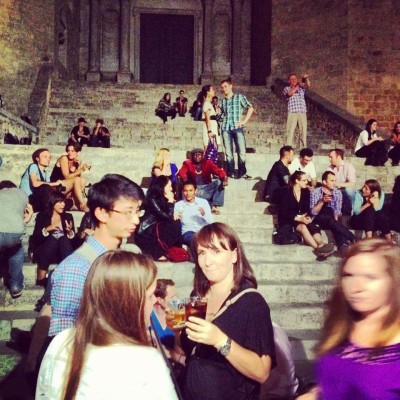
Blogger gathering at TBEX in Girona, SpainAt the moment, blog trips and bloggers hosted by a Destination Marketing Organisation (DMO) are still a bit of a novelty. DMOs don’t yet completely realize the value bloggers and bring but I expect an explosion in the near future when DMOs understand the value while travel bloggers realise the benefits a blog trip can offer and new travel bloggers want to join the club.
DMOs need a way to sort through all these requests. We’re not big fans of a one-size-fits-all approach to measure the value of bloggers but instead we like to match bloggers based on a DMO’s specific marketing goals. We also recommend that our clients take a pro-active approach to bloggers by inviting the ones with the best fit instead of a reactive one by waiting for requests to come in.
We have a good relationship with dozens of bloggers and a database with hundreds more. We have 9 criteria to select bloggers for blog trips and other campaigns, which are outlined in detail below. When developing social media strategies we recommend that our DMO clients also use these criteria to manage individual blogger requests.
1) Value to the blogger
I mention this one first, because if there’s no value for the blogger then there’s no use in working together. A blog trip or campaign needs to be a win/win situation. We’ve learned that it’s important that the DMO and blogger know each other’s expectations. Sometimes a blog trip might not work out for a variety of reasons. And that’s okay. But it’s better to set out the realities and expectations on both sides ahead of time.
2) Reach; the size of the audience
This is an important metric, but not as important as you might think – at least, not to us. We would rather work with a blogger who has a smaller audience and a higher influence. A blogger with 2,000 Twitter followers may be of more value than one with 50,000 if those 2,000 people are passionate, engaged and are likely to be influenced by the person they follow.
We use tools like Compete.com, Quantcast and Alexa to get an indication, or ask the blogger for data. We will also look at Twitter followers, Facebook likes, and other statistics. For bloggers, it’s a good idea to have this info handy as DMOs will ask for this.
3) Audience demographics
This criteria includes things like what language you blog in and what countries your readers are from, their age, education, income, etc. We’re not that interested in where the blogger comes from because their audience might come from a completely different place.
We will use Quantcast and sometimes other tools for this, although a lot of blogs don’t have enough traffic for these tools to provide valuable metrics. We sometimes ask bloggers, but we have had to make assumptions at times.
4) Influence in a niche
This one is more important to us than reach. We’re looking for people who are an authority in a subject matter. That’s the power of the Internet – there’s a community for every passion. It’s safe to assume that a wine blogger has an audience interested in wine. If we’re working with a destination that is seeking to leverage its wine products or experiences, we will pick a wine blogger with a small audience over a general travel blogger with a larger audience in most cases.
In order to determine influence, we look at things including comments on a blog (volume and types of comments) and how the blogger interacts with her/his audience. Why? It’s that personal connection that makes a blogger unique and influential. And we will also look at repeat visitation to the blog. This is an indicator of how loyal an audience is and therefore the influence the blogger has.
What we sometimes observe is that bloggers with a large audience lose the personal connection with their readers. Their blog becomes more like a traditional publication online. That’s to be expected and not necessarily a bad thing, it just changes the types of initiatives we will invite them for, and the approach we take. They may be better suited for a traditional press trip.
5) Connection to other influencers
This one is closely related to #4. Blogging is social. We believe that a blog trip or a blog campaign’s value doesn’t just come from the value as a result of the produced content, but also from the personal connections created. A blogger with a lot of connections to other influencers is more desirable as that means there’s a better chance that their messages are then amplified or retweeted by other influences. A good relationship with one blogger can also lead to a referral to another. We often ask other bloggers for suggestions about other writers.
6) Quality and style of writing, photography and/or video
This one speaks for itself. We prefer blogs with quality content. And sometimes one blogger’s style fits better with a particular destination brand than another. And it doesn’t mean that we look for moderate bloggers only, by the way. We seek honesty and transparency, otherwise a message won’t be credible. The blogger at TBEX who writes critical posts just to make PR people uncomfortable would probably not be invited, though (see #9). Often, quality trumps reach and influence.
7) Speed of communication
We don’t have a specific preference. It varies from initiative to initiative. Most of the time, a blog trip is designed to create a lot of social content right away, and speed is important. Other times, it won’t matter too much if it takes a few weeks for us to see a post (months is pushing it). The longer it takes, the more the details and energy are lost. Plus, the copy ends up looking more like it belongs in a traditional publication.
8) Use of technology and tools
Does the blogger tweet, Instagram, or post to fan pages during the trip? This is obviously helpful.
And it also varies. If we’re working on a campaign where we want a lot of content in the moment, Twitter, Facebook, and Instagram are important. In some cases, they’re not.
Sometimes we look for quality, influence, and reach for a specific tool or network. We invited a big Instagrammer to Flanders, for example. The Costa Brava even hosted an Instagram trip.
9) Personality
Is this blogger easy to work with?
We will happily sacrifice reach or influence for a nice person when we’re hosting a group of bloggers. Personality type tells us something about the bloggers’ relationship with their readers, and that’s important in social media. Other factors including professionalism and attentiveness are equally important. If it takes weeks for somebody to reply to an email, or if they don’t follow practical instructions we get worried. We often check references as well by calling another DMO the blogger has worked with.
We have good results using our criteria above. In the future we hope to build out our database so we can be a good matchmaker between bloggers and the tourism industry that delivers benefits for both.
-
Management, Travel & Tourism
NPS is the perfect destination KPI
01.08.13 | Permalink | 12 CommentsA destination brand is shaped by the stories people tell each other. Consumers will share stories about their experiences. Do it right and they’ll do the marketing for you. Under deliver and they will become detractors. It’s the role of the DMO to lead the collection of stakeholders to market to the right people and deliver remarkable experiences.
Fortunately a visitor’s experience is one of the few things a DMO and it’s stakeholders have control over. And NPS, or Nett Promoter Score is the perfect way to measure and benchmark this. NPS measures customer satisfaction by answering one question – How likely is it that you would recommend [brand xyz] to a friend or colleague? On a zero to ten scale, people who score a 9 or 10 are promoters, they will recommend your destination. People who score a 7 or 8 are passive while people who score between 0 and 6 are detractors. They will tell others not to go. When you subtract the number of detractors from your promoters you end up with your Nett Promoter score.
There’s a lot of evidence that a high NPS is a strong indicator for corporate growth. Southwest is known for it’s friendly staff and business practices. It stands out from most other airlines in the US. Southwest built a customer centered culture and considers “a high NPS indicates a strong competitive advantage“. They have posted 39 years of consecutive profits and this blog posts quantifies the results of their customer service efforts.
I’ve been thinking about this for a while and have concluded that every DMO should measure NPS. Because not only is NPS a good indicator of future growth, it will also get staff and stakeholders to focus on the consumer and the customer experience.
Managing your destinations reputation is more important than ever. And it’s a collective responsibility. Use NPS to measure and benchmark it. Read The Ultimate Question to learn more about NPS.
-
Experience Design, Internet, Management, Marketing, social media, Travel & Tourism
3 things to think about in 2013
Happy New Year everybody! Here are three things off the top of my head that are important things to consider for 2013. Do you have any more?
1) PUT SOCIAL AT THE CORE
I think it’s pretty clear by now that social media has a major impact on the travel decision making process. If your tourism business or DMO hasn’t realized this yet you better catch up. You should be at level 3 or higher by now.
Most marketers think of social media as an add-on to a traditional campaign, or at least start with traditional thinking. It’s time to flip it around. Start with a social idea and support it with traditional methods. Or do traditional things in a social way. For example, we recently worked with a DMO who let it’s Facebook community vote on what photos would be published in it’s visitor guide.
2) START USING SERVICE DESIGN
Mitigating a mediocre experience with brilliant marketing doesn’t cut it anymore. The experience IS your marketing and the stories your visitors tell each other is what it’s all about. You have two choices. First choice is to join the race to the bottom and keep offering specials, discounts and special offers. The second one is to create remarkable experiences people love and want to be part of, regardless of what it costs.
If your choice is the latter, you need to start thinking about service design. When you’re an operator you need to start thinking about the end-to-end experience you offer your guest. When you are a DMO you need to think about the end-to-end destination experience. Service design is gaining a lot of momentum in Europe, especially in Austria where destinations are starting to take an active role in the design of the destination experience.
3) MOBILE: THINK DEVICE PLUS CONTEXT
I was on a panel at a conference in Barcelona recently and somebody asked about mobile. Before I could even think about it I said “it’s not about mobile, it’s about device + context”. I probably heard it somewhere before but I have never really thought about it like that. But it’s true. Whether you build a desktop site, a mobile site, an adaptive site or an app, it’s not the device that’s important. It’s the context of use.
When you search google maps, it takes into account your device, where you are and what date and time it is. That’s the context of your usage and the information you get back takes that into account. You need to so the same thing. A consumer accessing your content at home is looking for very different things than a consumer walking down the street in your destination.
Now here’s the kicker. Often that means people use another website than yours. Somebody walking down the street looking for a restaurant is going to use Google Maps, Yelp or Tripadvisor, not a DMO website. Even a consumer planning as trip might never even make in onto your website (hello travel bloggers). Your content online strategy needs to include content on third party websites. From inspiration to transaction. Just like we used to do it in the 90s with travel guides and tour operator brochures.
